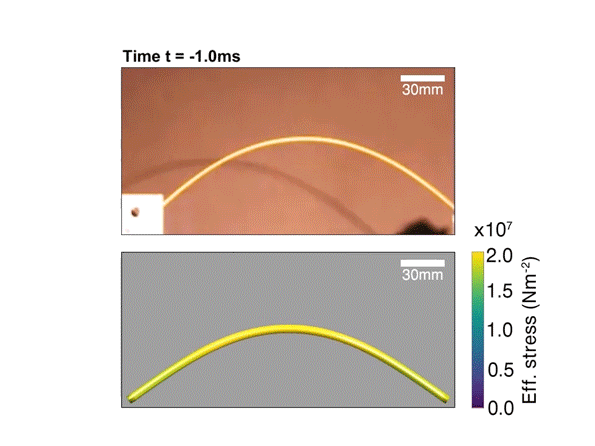The mystery of why spaghetti never breaks in 2 pieces
Andrei Mihai

The mysteries of science are truly worth appreciating and exploring. Is the universe infinite? Can we truly understand the human brain? Oh, and of course — why does spaghetti only break into 3 or 4 pieces?
It’s the question you never knew you wanted to answer.

Take a piece of dry spaghetti; don’t worry, you’ll still be able to cook it later, no waste. Grab it from both ends, and bend it more and more, until it breaks. How many pieces are you still left with? The answer (and I’ll bet you a carbonara dinner) is certainly not two.
Why does this happen?
The problem is not as trivial as it sounds. After all, spaghetti doesn’t have any particular physical property: it’s simply a long, brittle object, just like a million other objects — some of which we use for construction. Physicist Richard Feynman famously noticed this problem decades ago, and the problem has some implications for other branches of research, including physics, mathematics, and engineering. It was exactly these three branches that ultimately helped answer this puzzling question.
The first answers to this conundrum came in 2005 when French researchers described the breaking of thin brittle rods, spaghetti in particular. They found that when a rod is pushed past its breaking point, it sends ripples throughout the entire structure, and this almost always breaks the spaghetti into 3 or more pieces. But a team from MIT wasn’t happy with this solution. So they did what any responsible scientist would in this case: they built a spaghetti-breaking machine.

The machine showed that if you want to break spaghetti into exactly two pieces, you first need to twist it in a particular way, and then apply exactly equal force. This is where the machine came in handy: try as they might, researchers just couldn’t apply the force in a controlled way using their hands. The machine was able to show that any asymmetry in the applied force or the bending angle does not lead to the desired responses.
With all the parameters in check, they moved to the next stage: maths. They built a model of this entire process and, after some tweaks, were able to predict how any brittle rod with known parameters will break — an excellent combination of practical experiments and theoretical knowledge.

This may make for a fun party trick, but the conclusions reach far beyond spaghetti-breaking and have implications for understanding the fracture of 2D and 3D materials.
The reason why spaghetti breaks in two rather than four pieces when twisted is that the twist waves travel faster than the bend waves, which prevents stress from accumulating in the spaghetti (as would normally happen). This process can be relevant for construction materials, particularly in the event of an earthquake, and could allow engineers to better understand the breaking point of beams and rods in the case of such an event.
It’s also noteworthy that this finding only stands true for “classic” pasta — which is cylindrical in shape. The study does not apply for fusilli, ravioli, or other types of pasta.
“It will be interesting to see whether and how twist could similarly be used to control the fracture dynamics of two-dimensional and three-dimensional materials,” said co-author Jörn Dunkel, associate professor of physical applied mathematics at MIT, in a press release. “In any case, this has been a fun interdisciplinary project started and carried out by two brilliant and persistent students — who probably don’t want to see, break, or eat spaghetti for a while.”
*Important note: No spaghetti were harmed in the writing of this article, though hundreds of pieces were broken in the studies.
Der Beitrag The mystery of why spaghetti never breaks in 2 pieces erschien zuerst auf Heidelberg Laureate Forum.